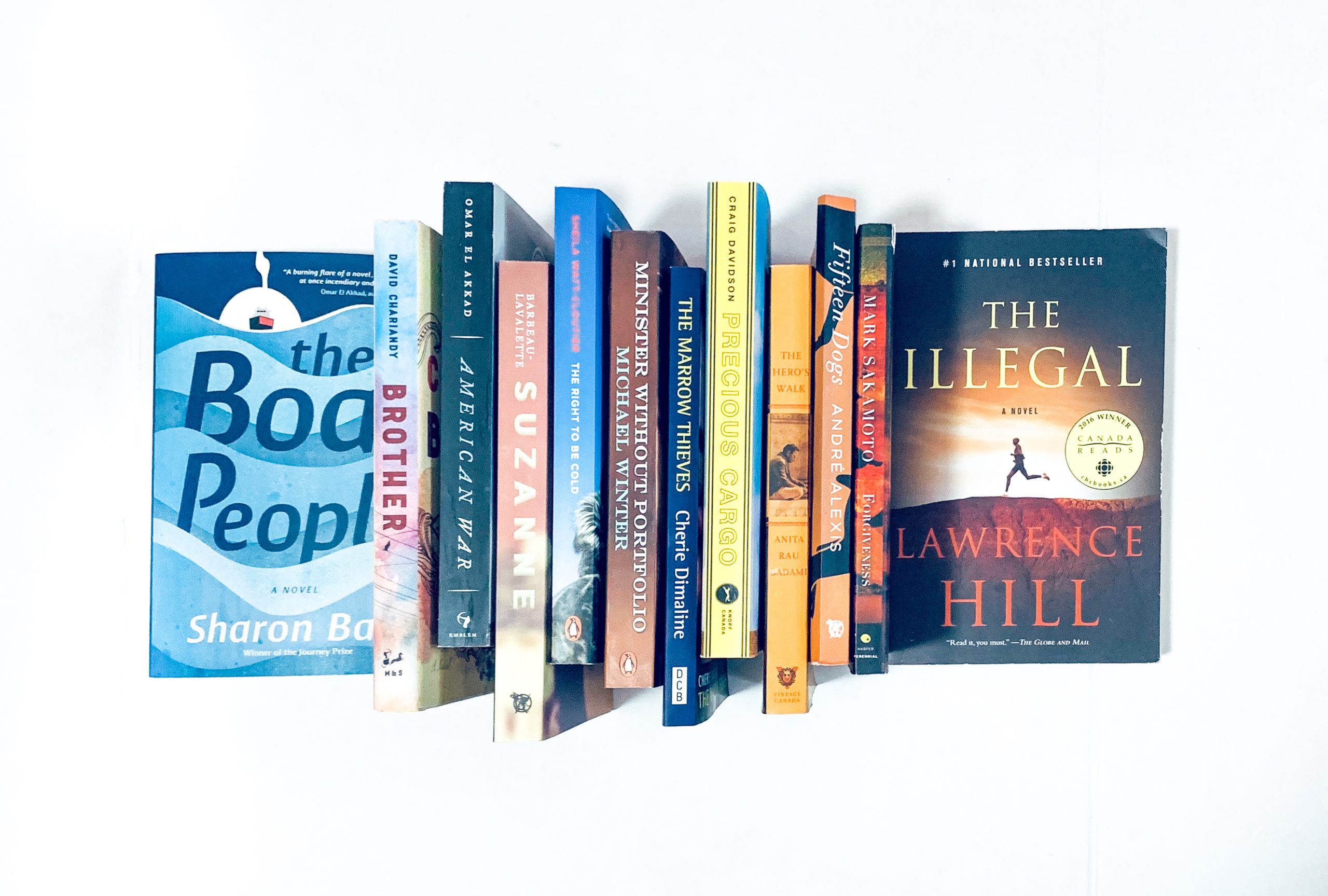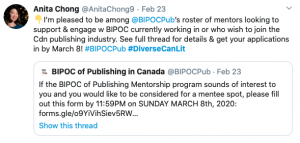What is the #DiverseCanLit hashtag and how does it intersect with more general discussions of Canadian literature online?
Tracing #DiverseCanLit
- canadiansreadtech
- December 13, 2019
- Data visualizations

One way of thinking about how Canadian’s use social media to write about books is in their transformation of the terms of their online conversation. How do Canadians discussing books use hashtags to change the tenor and content of the online discussion? If we think of hashtags as a kind of collection of keywords that frame conversations around Canadian literature, the transformation of those keywords can provide some indication about not just what Canadians are saying but how they imagine the terms of their conversation.
Certainly many Canadians write about Canadian books in the terms offered by official institutions such as the CBC & BookNet:


Posts like these largely use the terms on offer from official institutions in order to support the discourse of Canada Reads. These posts mostly reflect a celebratory public who champion particular books within the frameworks offered by the program.
Yet, in addition to these tweets that endorse the official Canada Reads narrative, there are also a number of ways in which #CanadaReads is transformed into a counter-discourse challenging the terms of Canadian literature.
For user, @leonicka, combining #CanadaReads with #DiverseCanLit is a means by which she is able to reshape the discourse around Canadian writing. #DiverseCanLit serves as a critique of Canada Reads when it fails to adequately represent a diversity of authors and subjects in its selection of books. The hashtag is also productive in that it extends the discourse of #CanadaReads by including previously-excluded voices.

Léonicka is a fascinating example of how one might both engage #CanadaReads on its own terms while also transforming the program’s discourse via her own ideas to push the official debate into new territory. What’s particularly interesting about Leonicka’s use of social media is that she has been able to mobilize her network of connections and her engagement in the discourse to develop a whole additional space of Canadian literary discourse. She began with a blog, which focused on Canadian Writing by people of colour and Indigenous people, developed the hashtag, #DiverseCanLit, and used that to intervene in, and transform, the discussion happening online.

This network graph represents Léonicka’s Twitter connections: she is simultaneously discussing the terms of the show with listeners, official CBC accounts, and celebrity hosts. She has gone on to parlay her own online cultural capital into a position as a literary agent, and has transformed #DiverseCanLit into the “DiverseCanLit” literary agency. The hashtag itself has come to be used in a range of discussions as a marker of both the limitations of traditional conceptions of Canadian writing as well as a sign of an alternative vision of what Canadian literature could be:







Previous
Next
This suggests that online discourse and social media are fragmented spaces, analogous to a public sphere but one which takes on new features by virtue of its digital existence. Indeed, can we actually transpose a conception of the public sphere onto social media? Or is Twitter, instead, a quasi-public algorithmically-mediated space in which software and data design have a significant effect on who speaks and how they speak? Léonicka engages in a kind of discursive concatenation, taking advantage of Twitter’s own algorithm to centre her own speech, using hashtags, @’ing people, and quote Tweeting in order to situate her speech at the centre of this data-driven discourse. She blends her critique of CanLit’s inattention to race with her digital savvy in order to transform the discourse. We couldn’t describe her participation in this discussion as singularly supportive or oppositional to the discourse of Canada Reads; she, rather, transforms that discourse. As such, #DiverseCanLit provides one example of how an otherwise-marginalized reader uses the digital sphere to force Canada to reckon with Indigineity, gender, sexuality, and race.
Further Reading

Canada Reads by the (Twitter) Numbers
As we frame our questions about who is discussing Canadian books in online spaces, we thought it would be useful to highlight some of the numbers that shape the conversation:Of the 8,687 Twitter users who write about Canada Reads, the vast majority tweet about the program a single time. Approximately 2,900 users post multiple times […]